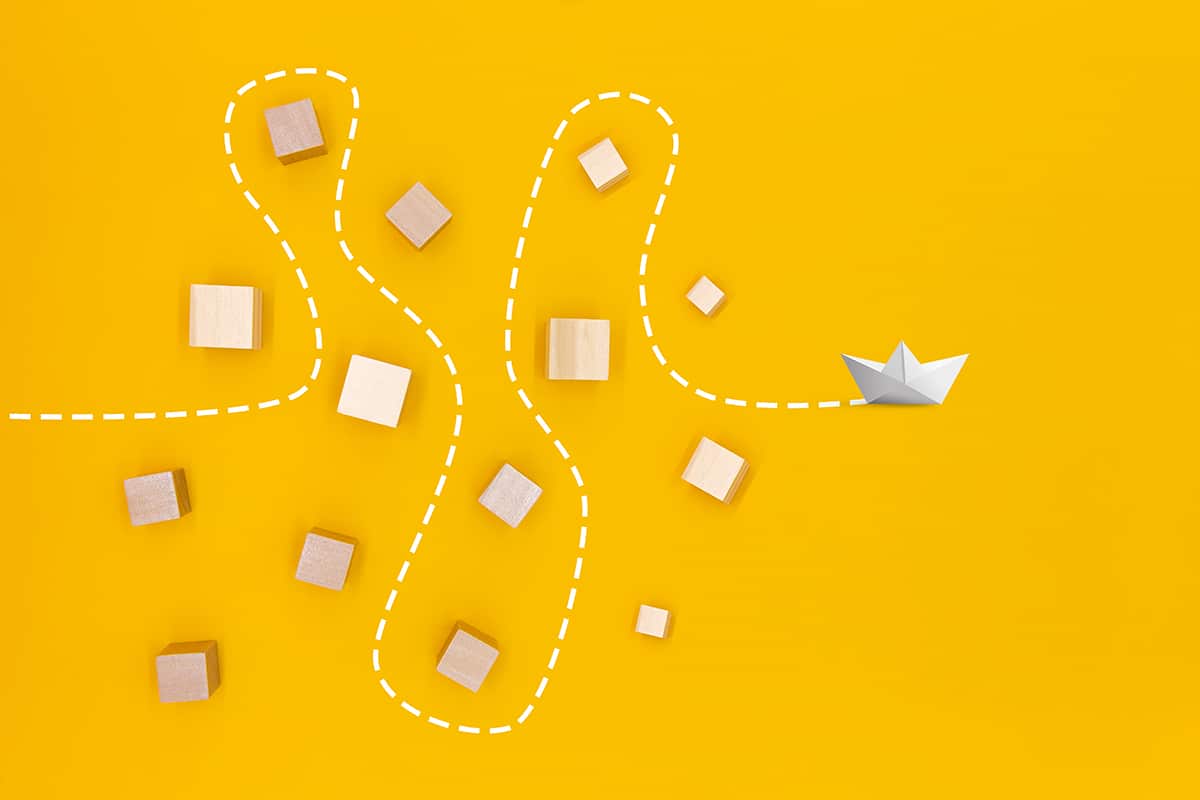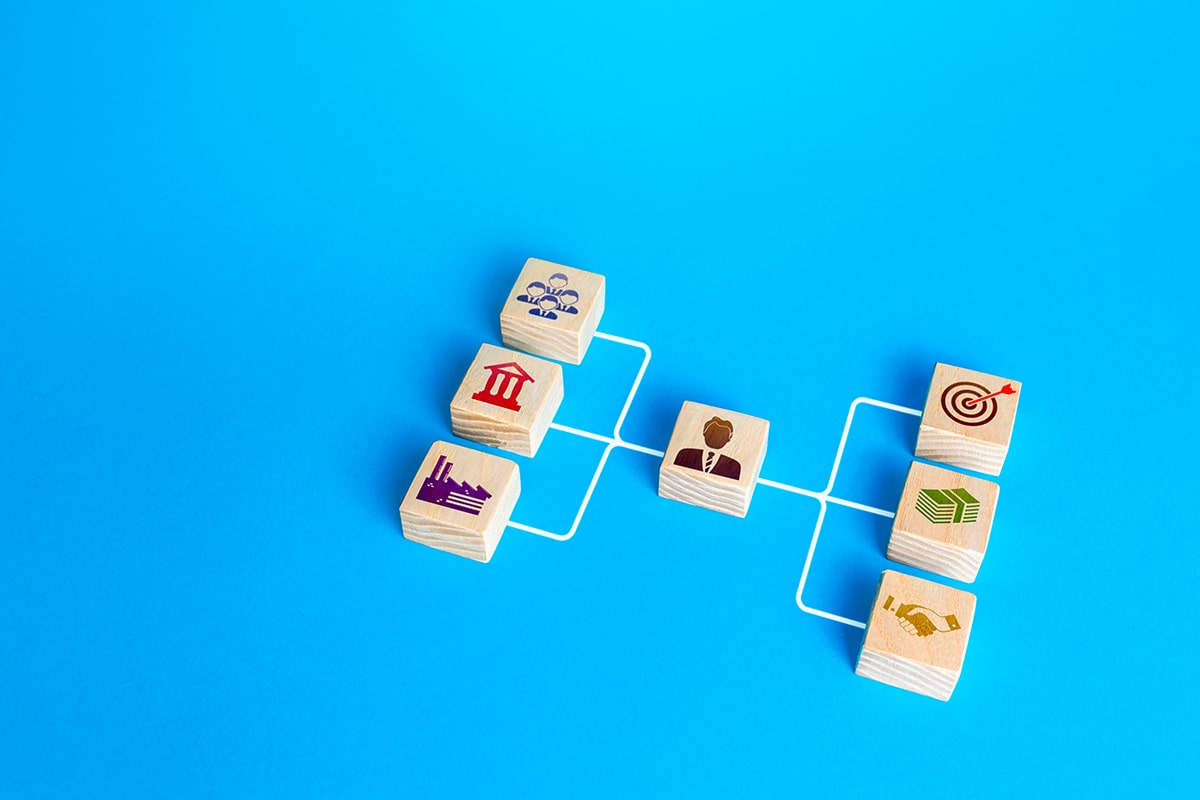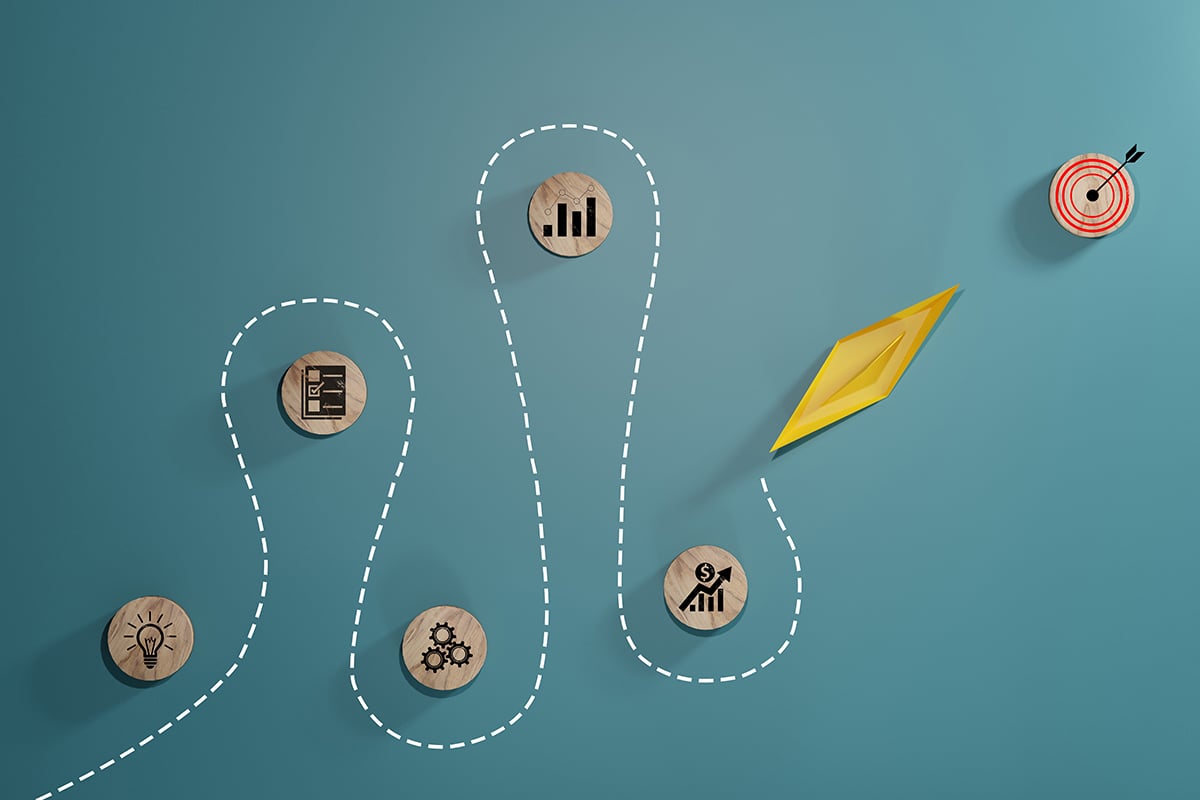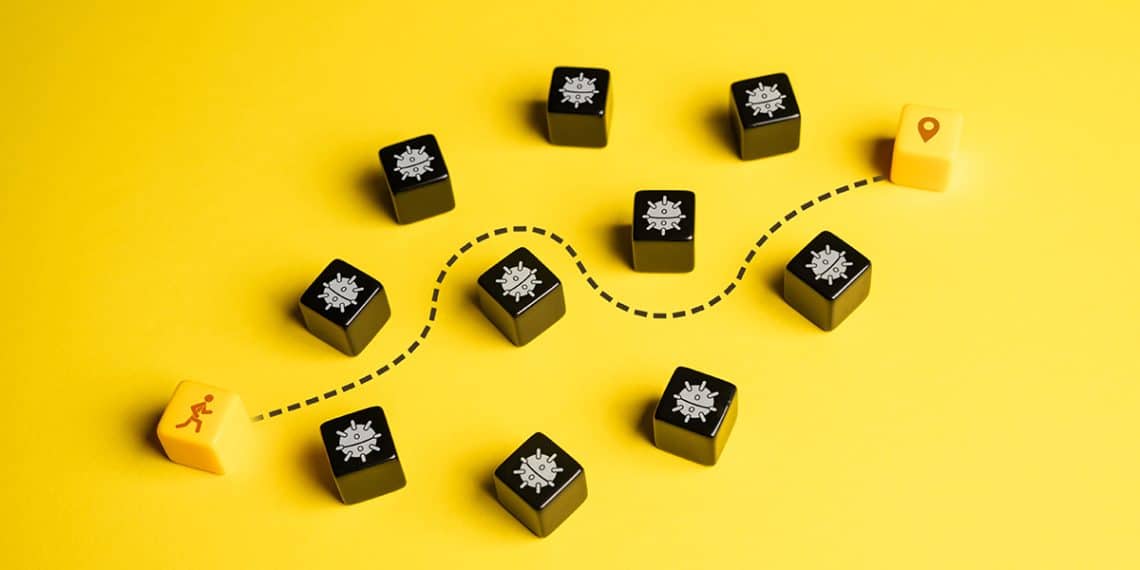Almost all product or service-based companies seek to guarantee a high-quality user experience for their customers. But how many of them genuinely make strides toward achieving such a goal?
Is the task of delivering a top-notch customer experience easier said than done?
The short answer is ‘no’.
When a company prioritizes the perspectives of their customers, this isn’t the case at all. And that’s precisely where the role of customer journey mapping comes into play.
Companies should aim to develop strategies to learn about their customers. Any information they gather can lead to increased conversions, customer satisfaction, and customer retention — the magic trio for total market domination!
Let’s dive into our content and get into the nitty-gritty of customer journey mapping, shall we?
Collect feedback with JustFeedback
JustFeedback helps your business increase profits and reduce risk by improving your customer experience
What is a customer journey map?
If we want to properly define a customer journey map, we should think of it as a tool that can effectively help companies visualize the experiences customers have when engaging or interacting with their brands.
Essentially, we’re talking about the customers’ viewpoint. This is something that can be tracked if we’re looking to understand how customers experience any given brand.
In addition, it acts as a tool that can enable companies to come up with strategies that deal with changing customer expectations.
Customer journey maps are often referred to as “journey maps” or “UX maps”. Their main role is to build a customer experience strategy that leverages personalized experiences across all existing or possible touchpoints.
As you form a visual representation of a customer journey, you will reveal insights related to a product’s impact, potential issues, and/or opportunities for innovation.
However, crafting a customer journey map from scratch can be quite the challenge. And that’s why we think this complete guide to customer journey mapping will come in handy!

What are the key elements of customer journey maps?
Before we discuss the main advantages of building a customer journey map, let’s dive into the different elements involved in the process. Here are seven elements which should be included in customer journey mapping —
1. Customer persona
What’s the first thing that comes to mind when imagining your ideal customer? This is an important question that should lead you into an effective market research plan.
Analyzing a customer profile and getting to grips with potential target segments requires comprehensive data research.
This research is intended to reveal customer motivations, pain points, and other key customer data points.
To build a complete customer persona, key components such as customer demographics, buying habits, goals, and challenges will need to be fully documented.
2. Customer touchpoints
The whole concept of the term “Customer Journey” emphasizes the fact that customers move through a set journey in order to reach their destination. What we mean here is that they make purchase-related decisions.
To reach these decisions, the customer explores your website, reads promotional emails, contacts customer support representatives, engages with social media, etc.
Therefore, it is crucial that you monitor both online and offline touchpoints in your quest to build a customer journey map.
3. Journey stages
Creating a customer journey map is a major endeavor and needs to be approached strategically. This is why we recommend breaking the journey into stages or phases. These journey stages must be well-documented.
The four most common journey stages you will have to consider are awareness, consideration, decision, and retention. You can strategize for these stages individually or collectively and attempt to identify potential areas of improvement in each of them.
4. Customer emotions
Alongside journey stages, customer emotions should also be monitored. This is because emotional changes can be witnessed at every stage. Why the need to document customer emotions?
This gives you the opportunity to empathize with customers and their experiences while ensuring that any negative emotions are handled with the utmost urgency.
At the same time, it allows you to amplify any positive emotions and build a more enjoyable customer journey. Customer emotions can be captured via regular surveys and / or interviews.
5. Customer pain points
What made a customer first land in your sales funnel? This question is certainly one worth asking. Peeling through its various layers could reveal an array of reasons. This process might also uncover pain points.
Not identifying any critical customer pain points within your sales funnel doesn’t necessarily mean your customer journey doesn’t have them. Customer pain points can and should be used as an opportunity to enhance customer experience.
6. Customer expectations
What do customers want to achieve when they work their way through your customer journey map?
You should know what customers are aiming for at each of the customer journey stages.
This is crucial because it will allow you to understand customer goals and expectations. These details can then be utilized to build better customer journeys.
At the same time, you will come to realize whether or not your company is meeting its customers’ expectations.
7. Journey channels and devices
Customers might well approach your brand through a range of devices and channels. As a business owner, you must ensure that all these channels and devices are exploited.
You should also consider the fact that customers use different channels and devices when moving through the different stages of their journey.
As you track these channels and devices, you will be able to optimize customer experiences as your understanding of the journey develops.

What are the key benefits of customer journey mapping?
Customer journey mapping comes with a huge set of benefits. Below you’ll find a list of key benefits in terms of developing an effective customer journey map —
1. Customer knowledge
There’s nothing more vital than being able to understand where your customers are coming from. And that’s what customer journey mapping can help you to achieve.
As you create a customer journey map, you can delve deeper into the whys and wherefores in terms of customers interacting with your brand.
More importantly, customer journey mapping could reveal shortcomings in any assumptions you’ve made about the average customer-brand interaction.
In other words, customer journey mapping is an opportunity to get a good look at your business from your customers’ point of view.
2. Identifying key customer touchpoints
A major benefit of developing a customer journey map is being able to identify key customer touchpoints. As mentioned earlier, your customers will most certainly use different channels and devices to interact with your brand.
This will eventually lead to the development of several highly complex and non-linear customer touchpoints.
A customer journey map makes it easier to bring all these touchpoints together in one place and allocate the right resources in order to monitor and improve them.
3. Implementing personalization
Customers usually favor brands that clearly show they care about customer experience.
Nothing is more telling than what a company does to consider customers’ feelings, pain points, and expectations. In other words, customers tend to take note when it comes to how a brand implements personalization.
With a customer journey map, you can dig a little deeper and learn how to fully understand user intent. This, in turn, will lead to being able to personalize customer experiences.
For example, you can create targeted landing pages, post relevant social media ads, or personalize customer onboarding, etc.
4. Boosting ROI and customer satisfaction
A well-developed customer journey benefits companies by boosting their return on investment. This is all down to the fact that the mere process of creating a customer journey map leads to increased customer retention.
The process helps improve customer onboarding, adoption, and subsequent implementation. Successful onboarding can often lead to higher customer satisfaction, which later leads to increased customer loyalty.
5. Becoming more competent
If you’re looking to get one over on the competition, customer journey mapping can be a popular tool. A map can be a massive addition to product strategy, which eventually helps the product or brand to stand out in the market.
Any pain points or opportunities can be worked on to effectively differentiate your brand and make it more relevant to changing market needs.
6. Identifying gaps in the customer journey
Creating and monitoring customer journeys helps identify gaps in terms of customer-brand interactions. The touchpoints (both existing and new) can be improved with the help of customer journey mapping.
This can be achieved when a map allows you to establish how customers navigate the site or app. The map provides awareness about areas in a journey where customers might face frustrations.
7. Strategizing using customer emotions
Can feelings and emotions really be quantified and reflected in a customer journey map? The whole idea seems challenging, but it needn’t be.
This is because a well-researched customer journey map ensures that customers’ emotions, thoughts, and feelings are visualized and then put into use when products and services are being designed.
Therefore, a customer journey map stands to benefit a company when it is attempting to understand what customers feel when interacting with the brand.
8. Ensuring the alignment of stakeholders
Customer journey mapping is an excellent opportunity to align UX, products, marketing, sales, management, and customer service teams.
This alignment helps all teams or stakeholders to collectively understand the customer journey and go on to provide feedback.
All solicited feedback can significantly speed up issue resolution within the customer journey. Cross-functional customer journey collaboration such as this helps develop a holistic view of the expected customer experience.
9. Creating better marketing strategies
Marketing teams have to accomplish tasks ranging from driving users from various marketing channels to creating product landing pages and official websites.
Since customer journey mapping helps identify customer pain points and challenges, marketers can use this information to devise a marketing strategy that presents the company as an ideal solution to any challenges.
10. Planning for scalability
Companies whose goals might include expansion and scalability in the near future can benefit the most from customer journey maps as they allow for a tactical customer-centric expansion.
Scalability driven by customers’ pain points and issues can help develop a strong foundation for brand expansion.

What are the different types of customer journey maps?
There are several types of customer journey maps. You should know which type of customer journey map your organization needs before starting any process. Here are some of the most common types of customer journey maps —
1. Current state journey maps
The current state journey maps present a detailed view of how customers interact with the brand at the present time.
The map highlights all areas in the journey that need further improvement or strengthening. Current state journey maps are the most commonly used.
2. Future state journey maps
As the name suggests, a future state journey map helps develop an ideal scenario with regard to a customer journey. Although the journey map is built on the existing state of the journey, it pushes toward a higher level of innovation.
3. Strategic journey maps
Strategic customer journey maps are essentially journey maps that represent an overview or a bigger picture.
They consider any customers’ challenges, goals, experiences, or dreams. Strategic journey maps are also known as “Sagas” and incorporate user stories or “epics.”
4. Tactical journey maps
Tactical journey maps are also called “day-in-the-life” journey maps. These maps can effectively zoom into the specifics of a particular CX event. They provide an “epic-level” view into the challenges and issues related to these events.
5. Persona-based journey maps
Persona-based journey maps focus entirely on the persona when dealing with pain points and challenges. They prioritize the user role (persona) or an individual who is facing major issues when moving through a particular stage of the journey.

How to create a customer journey map?
Now that you understand how customer journey maps work, let’s take a more detailed look at how you might go about creating one for your business. What follows are some key steps involved in customer journey map development —
1. Know your objectives
The “why” here is important. You must come to understand why you need to develop a customer journey map. Make sure your team also understands the purpose behind the endeavor and those it is expected to impact.
Setting clear objectives will always push the team in the right direction. This can be done by identifying any demographics and psychographics related to your typical customer.
2. Persona profiling
Extensive research is the next most important step in the process. All research should focus on real-life customers and prospects.
You need to develop questionnaires and surveys. Focus groups will also help you uncover what the market expects and which personas are more interested in purchasing your products.
Any feedback will lead you to more refined customer journey mapping.
3. Know your target personas
The last step focused on identifying as many personas as you can cater to, whereas this step will focus entirely on your target customer personas. In other words, you should target one or two personas if you wish to develop an effective customer journey map.
This step ensures that you don’t group too many personas while developing a customer journey map. We highly recommend choosing the most common customer persona and developing a map from that point.
4. Identify all touchpoints
The next step in the process is touchpoint identification and listing. A great place to start is with your official business website.
List all the touchpoints customers are required to navigate. Generate insights to understand the touchpoints which focus on those that provide direct access to customer actions to maximize the insights that be gained.
Your list of touchpoints should enable you to not only understand but resolve any challenges in the customer journey. Once your website touchpoints have been catered to, you can move onto social channels and other third-party sites.
5. Allocate resources and customer journey mapping tools
As you build your customer journey map, you will have to allocate some resources to resolve any pain points within the listed touchpoints.
Determining the required talent and tools to connect with customers and accurately predict the direct impact of your efforts on customer experience has to be the next step.
6. Run through the customer journey
When your customer journey map is ready, you will have to walk through it and imagine being in the customer’s shoes.
This should provide you with a first-hand experience of what customers experience throughout the journey.
As you hit roadblocks, you will have opportunities to fix any issues and build better customer journey maps within an appropriate time limit.
7. Analyze results
You may well have developed a customer journey map, but you’re not done yet! You can only achieve successful customer journey mapping when you’ve analyzed the results.
Monitor all touchpoints in the map and establish where in the journey you might be losing customers. An analysis such as this will help identify areas in CX where customers’ needs are not being satisfied.
8. Continue to update
The final step in the process is one that is essentially never-ending.
You have to keep updating the customer journey map as customers’ expectations and needs change over time.
Use any changes in customer behavior to visualize an updated and improved customer journey map.

Bonus: Tips for your customer journey map
Don’t forget to implement customer journey mapping best practices. Here are some of the best tips we’ve got for you when developing your customer journey map —
1. Always stick with your core audience
This goes without saying, doesn’t it? Your core audience will be subjected to the map more than anyone else. Therefore, you should always keep your core audience in mind when mapping the journey.
More importantly, you should remind your team about the “whys” of customer journey mapping.
The idea here is to use your resources to identify the issues on the map and resolve any resulting friction. Once this has been achieved, you will put your organization on the fastest track to effective customer journey mapping.
2. Highlight the essential moments in the map
The entire process of customer journey mapping should be done from the perspective of your customers. It is incredibly important to value how the journey map looks from your customers’ perspective.
More importantly, you need to use the touchpoints identified and listed in the process to fully accomplish this.
You should also try to include any competitors or relevant third parties. This allows you to approach the map in a more detailed manner. Simply documenting the touchpoints in the journey should reveal enough opportunities that require action.
These essential touchpoints should be properly highlighted in the mapping process.
3. Don’t forget to include logic and emotions
It is particularly important that your business understands that purchasing decisions for customers are often very much emotional. The emotions experienced by customers when making decisions should be considered when mapping the customer journey.
Try to think about it this way — customers who experience anxiety and other emotional issues during the journey are more likely to abandon a purchase.
Anxiety alone can make your prospects second-guess themselves while on the journey and move to your competitors.
We highly recommend mapping your buyer persona’s emotions. At the same time, you should examine the logic behind purchasing decisions and take them into account. This will help develop an accurate representation of the average buyer’s journey.
4. Develop an actionable journey map
When developing a customer journey map, your focus should not solely be on identifying and listing any insights related to shortlisted touchpoints.
It is true that documenting the touchpoints is essential. But your efforts will be more productive if used in tandem with actions.
The insights should be visualized and represented in a way so that all stakeholders involved can take action and improve their part of the customer journey development. At the same time, you should try to prevent the map from entering information overload.
Remember to prioritize and add actionable insights that most matter to the organization at a given point in time.
5. Couple journey mapping with business metrics
Why focus on developing the customer journey map if it doesn’t bring anything of use to your business? It is for this reason that we recommend mapping the customer journey alongside your business metrics.
To achieve this, you can simply associate the journey and related touchpoints with business KPIs. This will also result in a more CX-focused business that benefits not only customers but your entire organization.
Final thoughts
Creating effective customer journey maps should be a priority for any customer-centric brand if they really want to undestand their customers.
Making customer journey mapping a priority and regularly referring to it when building business strategies paves the path for an organizational culture where the customers always come first.
This is a crucial step that, if skipped, can lead to a significant gap between business strategies and customers’ expectations.
A comprehensive customer journey map is key to unlocking your potential in terms of market domination. We hope this guide on customer journey mapping has helped you understand the process inside and out.
Did you find this guide helpful? Stay tuned for more informative posts in the future.
